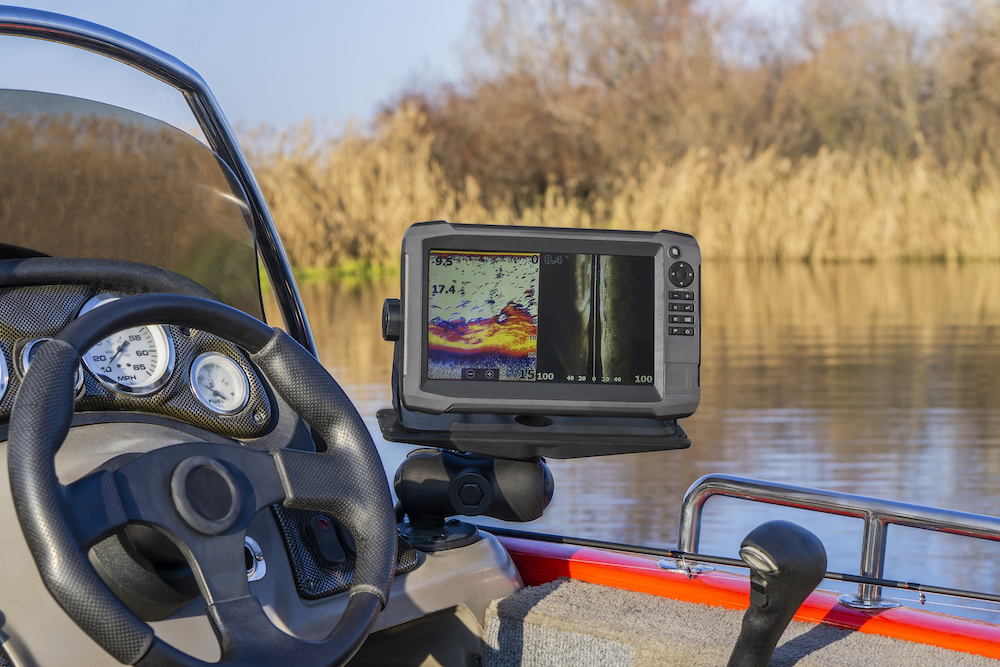How To Choose the Best Fish Finder for You
If you’re serious about fishing, you won’t want to go on a trip without a fish finder.
A fish finder is a device that maps the marine environment the fish inhabit, making it easier for you to track their movements and catch them.
It’s easy to get lost in the technical talk when buying your first fish finder. Trying to figure out its different functions and features can be daunting for a first-time user.
Not to worry, though, because our guide will help you find the exact one that meets your needs even with the vast selection of fish finders.
Ready to get your hands on the right fish finder? Let’s look at the features that require your attention more than any other.
Feature #1: Transducers
It’s all about the transducer. This part is responsible for sending out and receiving sonar waves, which bounce off different objects once released into the water.
Once the transducer picks up the waves, it processes the data in them in its central unit. It is there where these signals are turned into a display the fisherman can see and understand.
Transducers can be mounted in different ways, the easiest of which are those that come with the transom mount. You can also opt for the thru-hull mount if you’re into more serious fishing and your boat is larger.
Transducer Material
Depending on your boat, you will need to choose the ideal transducer material. One made of plastic should do for enthusiasts and casual fishermen, as it works with almost all types of boats.
Fiberglass and metal hulls and transducers with thru-hull or in-hull mounts require plastic cases. On the other hand, steel and aluminum hulls will need metal ones. As for vessels with wood or fiberglass hulls, they will require bronze housings.
Transducers with transom mounts and trolling motor transducers are the best fit for recreational users. They should be compatible with almost any vessel when you follow the installation guidelines correctly. If it’s a thru-hull transducer that has caught your fancy, your choice should be between bronze and plastic.

Cone Angles
Transducers emit sound waves within cone angles, which makes this another important aspect to consider when buying a fish finder.
The cone angle determines how much area the beam emitted from the boat covers. A wider cone will cover more area the deeper the beam gets, but this is usually at the expense of sensitivity. On the other hand, a narrow beam doesn’t cover as much ground, but it offers high sensitivity in deeper water.
You decide what it’s going to be.
Cone angles typically range from nine to more than 60 degrees. However, transducers in most fish finders tend to have cone angles between 16 and 20 degrees. This should be an excellent range to start with if you’re still figuring out what depths to fish in.
Some fish finders can release multiple beams from a single point. Some models can release two to up to three beams. Multiple beams tend to be useful for fishing in larger bodies of water like lakes and oceans.
It is worth noting that the beam number dictates how much you will have to pay for a particular device. If you’re after great value for the price, dual beams should be the best choice as they are the most balanced.
Feature #2: Screen
Do you want a colored or black and white screen? Most would say colored, but b/w has its uses for sure.
In a fish finder with a colored display, you get millions of colors and amazing details. By contrast, a b/w version gives you no more than 265 shades of gray.
A colored screen also makes the display easier to read and understand, benefiting first-time users. Since there are more colors, you better understand what’s going on.
The issue with b/w screens is that they’re more difficult to read, especially under the sun. The feature falls short yet again on overcast days due to its limited readability.
Then again, there’s a reason these models are still in production. They are cheaper and more practical if you’re not sure you want to get serious with fishing.
Screen Resolution
Display resolution is another important consideration. The more pixels in your display, the clearer the image will be. It’s as simple as that.
Ideally, you want to aim for 240 x 160 pixels at least. Go higher if you feel this resolution does not meet your requirements. If there’s money to spare, don’t hesitate to go for a high-resolution display. After all, you want your fish finder to give you the best chance to spot and catch fish.
When shopping for a fish finder, these are the two main features to direct most of your attention towards. When these two align with your fishing needs, you will have an acceptable fish finder to take on your journey more often than not.



